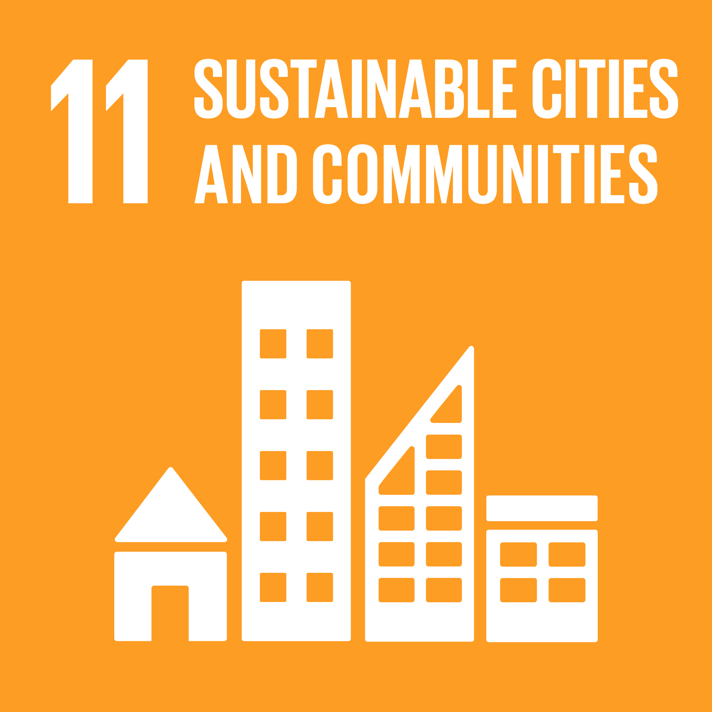Goal 11: Sustainable cities and communities
Published
Goal 11 is to make cities and human settlements inclusive, safe, resilient and sustainable.

Urbanisation is extensive and transformational around the world. Over half of the world's population live in urban areas. By 2050, this proportion is expected to have risen to 70 per cent. Cities often take the lead when it comes to development, and are a hub of innovation and new ideas. The rapid and large-scale move to cities places new demands that must be met in an ecologically, economically and socially sustainable manner.
Growing cities can create new opportunities for economic growth but also contribute to increased social disparities and strains on ecosystems. A rights perspective and the right to housing are important challenges. Today, one billion people live in slum areas. Poverty, poor administration and insufficient planning capacity lead to the development and expansion of slums. These have major deficiencies concerning access to healthy housing, clean water, adequate sanitary solutions, secure energy supply and waste management, as well as the safety and security of those who live there. Disaster risk reduction and reconstruction of housing in post-conflict areas contribute to sustainable development.
Sustainable urban development covers sustainable construction and sustainable planning including housing, public spaces such as parks and squares, transport, recycling and safer chemicals management, which in turn require institutional capacity, new technologies and other components.
Sustainable urban development requires cross-sectoral cooperation and governance at several levels simultaneously (national, regional, municipal and local level), including advanced forms of dialogue with citizens and the business sector. In particular, sustainable urban development should take account of women's and girls' infrastructure and sanitation needs. Account should also be taken of people with disabilities, children and the needs of older people.
Targets
11.1 By 2030, ensure access for all to adequate, safe and affordable housing and basic services and upgrade slums
11.2 By 2030, provide access to safe, affordable, accessible and sustainable transport systems for all, improving road safety, notably by expanding public transport, with special attention to the needs of those in vulnerable situations, women, children, persons with disabilities and older persons
11.3 By 2030, enhance inclusive and sustainable urbanization and capacity for participatory, integrated and sustainable human settlement planning and management in all countries
11.4 Strengthen efforts to protect and safeguard the world's cultural and natural heritage
11.5 By 2030, significantly reduce the number of deaths and the number of people affected and substantially decrease the direct economic losses relative to global gross domestic product caused by disasters, including water-related disasters, with a focus on protecting the poor and people in vulnerable situations
11.6 By 2030, reduce the adverse per capita environmental impact of cities, including by paying special attention to air quality and municipal and other waste management
11.7 By 2030, provide universal access to safe, inclusive and accessible, green and public spaces, in particular for women and children, older persons and persons with disabilities
11.a Support positive economic, social and environmental links between urban, peri-urban and rural areas by strengthening national and regional development planning
11.b By 2020, substantially increase the number of cities and human settlements adopting and implementing integrated policies and plans towards inclusion, resource efficiency, mitigation and adaptation to climate change, resilience to disasters, and develop and implement, in line with the Sendai Framework for Disaster Risk Reduction 2015-2030, holistic disaster risk management at all levels
11.c Support least developed countries, including through financial and technical assistance, in building sustainable and resilient buildings utilizing local materials

 X
X